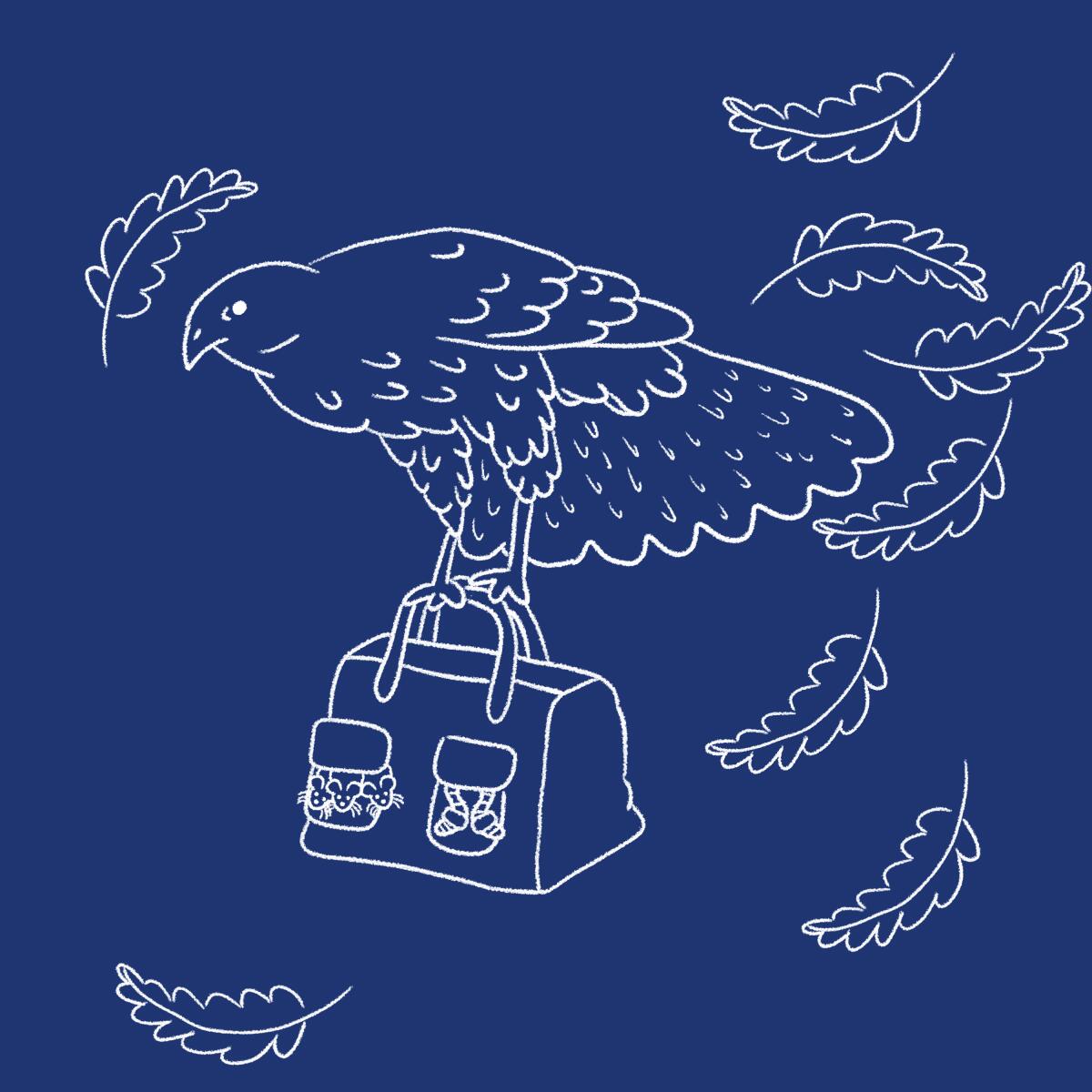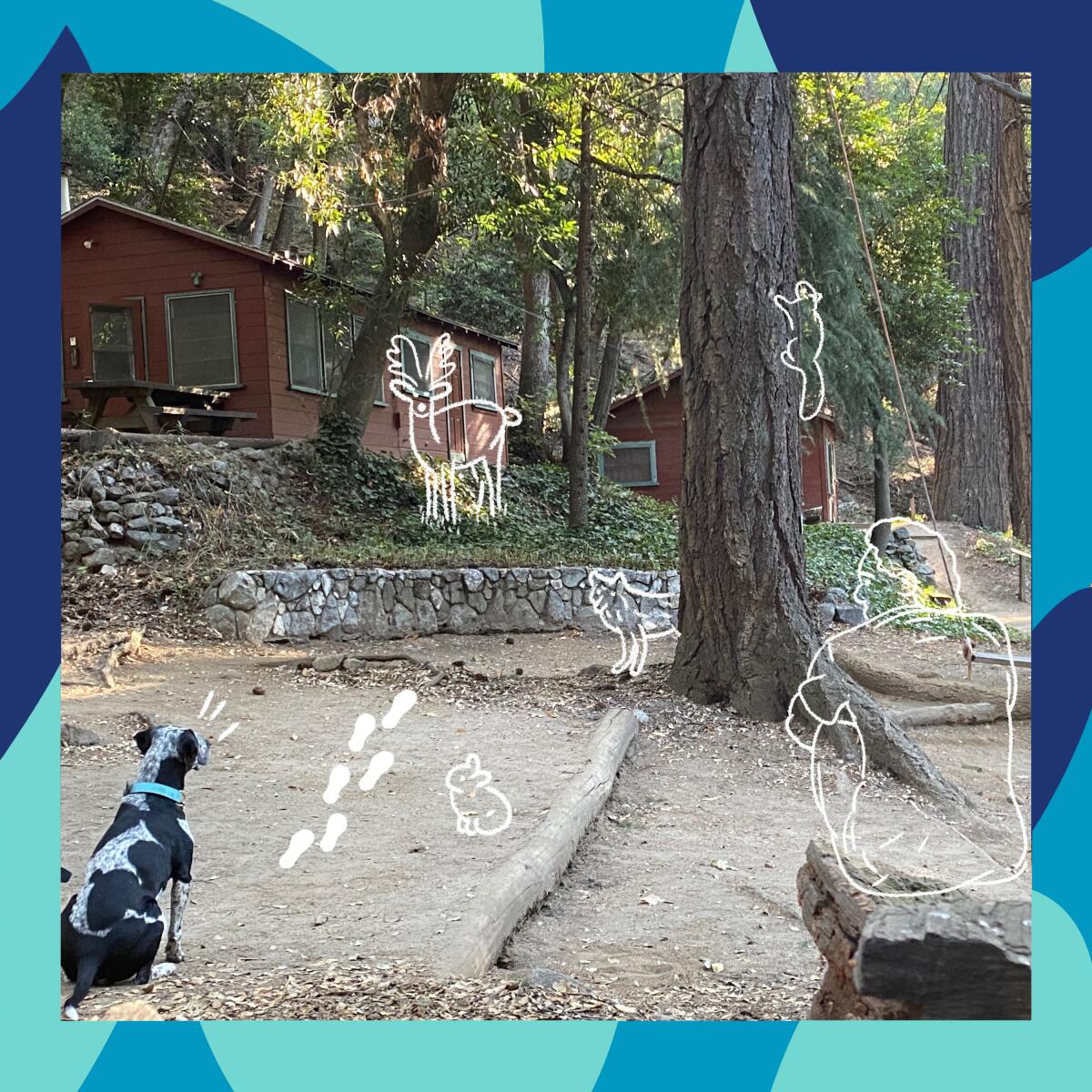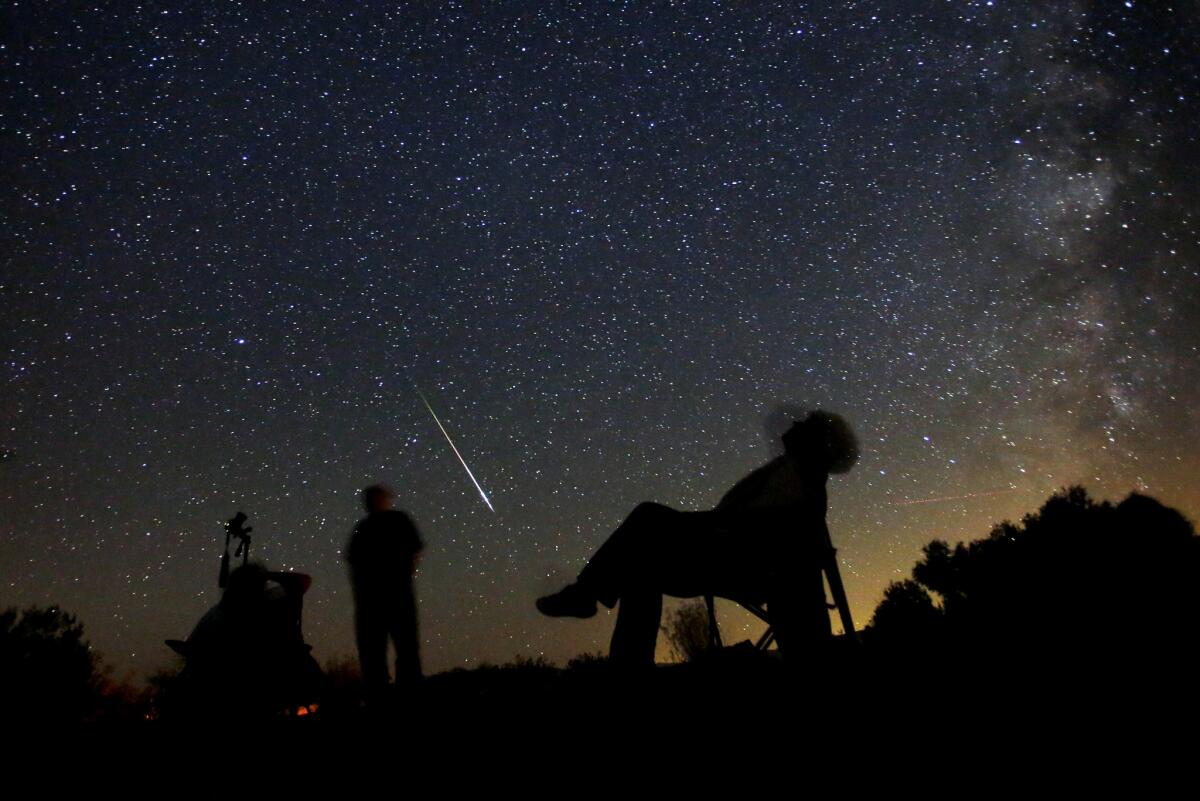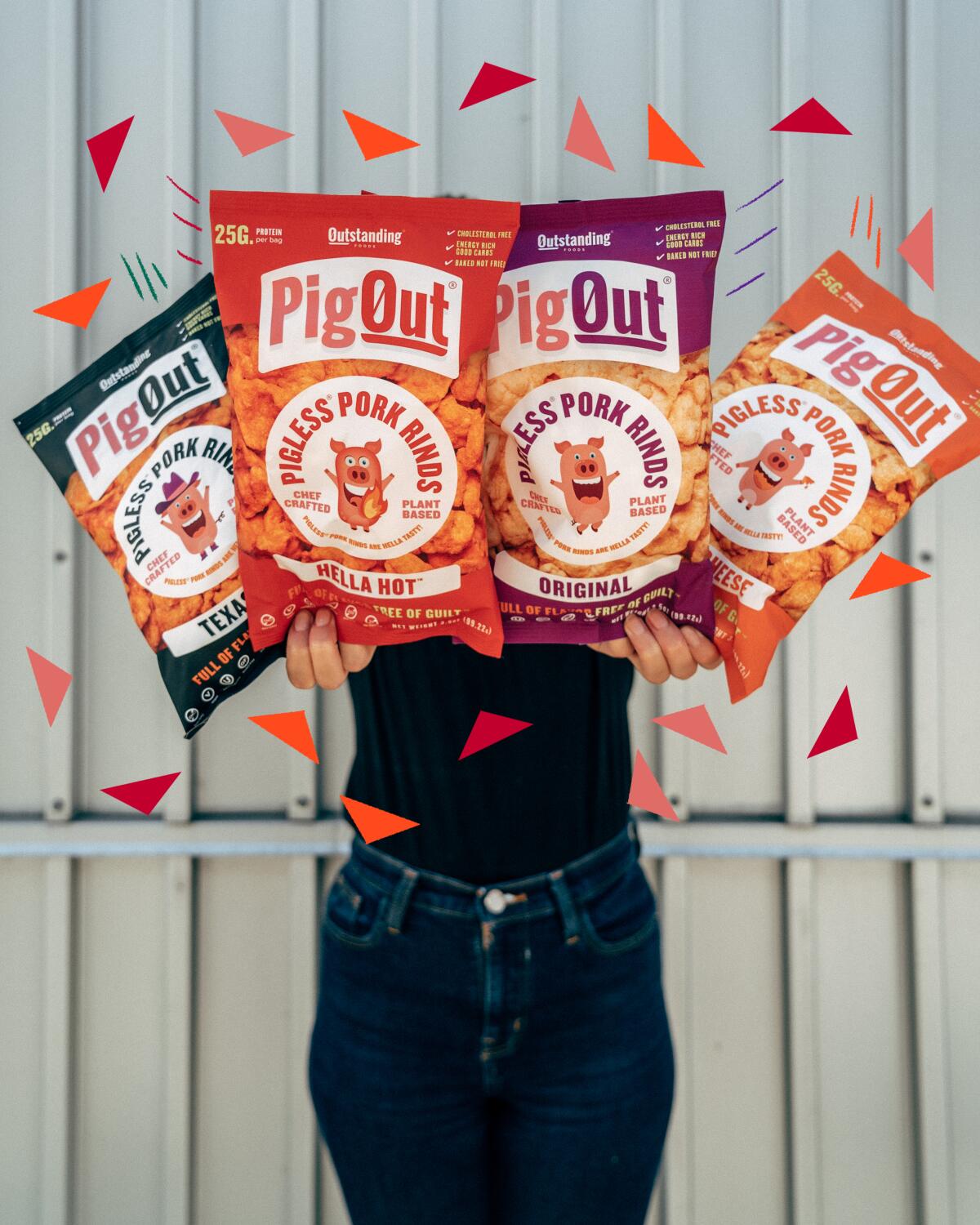These wild things moved into L.A. for good

- Share via
By Mary Forgione
Design and illustrations by Micah Fluellen
For the record:
6:40 p.m. Aug. 19, 2020An earlier version of this newsletter incorrectly said the community scientist website iNaturalist was run by the L.A. Museum of Natural History. It is run by the California Academy of Sciences.
Sign up here to get The Wild sent weekly to your inbox.
Your newest neighbors are the type that would happily eat dinner in your backyard without inviting you. Take no offense.
These Southern Californians, with feathers and tails, have been learning new habits and adapting to city life over the last few decades. In a new study, a team of researchers at the Natural History Museum of Los Angeles County and UCLA found more than 50 wild bird species now nest and thrive in some of our most built-up areas. They call them “urban success stories.”
“The more species that persist and thrive in ... these human areas, the better off biodiversity and wildlife will be,” said Allison Shultz, one of the study’s co-authors and assistant curator of ornithology at the museum.
Case in point: the Cooper’s hawk, a large, sturdy, blue-gray raptor that feeds mainly on other birds. The now common urbanite was absent from L.A. neighborhoods in the 1980s. Goldfinches, woodpeckers, orioles, juncos, kingbirds and three types of hummingbirds now live here too, offering a connection to nature that can begin outside your door. (Here’s a guide on how to start birding.)
When you see one or two, snap a photo. That’s how researchers discovered which birds have moved in. The study used two different L.A. data sets created by citizen scientists from different time periods. Anyone can upload their wild finds and add to our understanding of the city as habitat. Two popular places to start: iNaturalist, run by the
California Academy of Sciences, and ebird.
3 things to do this week

1. Spend a night at a hike-in camp in the San Gabriel Mountains. Sturtevant Camp has been part of the mountains north of Sierra Madre since 1893. The only way to get there is on foot. The only way to get your gear there (unless you want to carry it) is by loading it onto L.A. County’s last remaining mule train, which charges $1 a pound. Cabin prices are $90 to $320 a night.
Kelcie Pegher, L.A. Times editor for off-platform engagement, wasn’t big on camping. The four-mile hike up the canyon was hard, with stream crossings and some steep stretches. Still, she found the camp to be an ideal pandemic hideaway. “In a time period of deep uncertainty, where renting an Airbnb or going to a hotel room feels unsafe, a cabin in the woods was enough,” she wrote. Read about her journey here.

2. Look for shooting stars during the Perseid meteor showers. Stargazers love the Perseids in mid-August because they’re fast and bright. You may get lucky and see fireballs, which NASA describes as “larger explosions of light and color that can persist longer than an average meteor streak.” For best viewing, find a dark spot away from city lights and look for streaks of light across the sky. The meteor showers are peaking now and should be visible for the next week. The catch: They’re best seen between midnight and dawn, so set your clock or pull an all-nighter.

3. Kayak in a salt marsh in Newport Beach. Social distancing and gliding on the water — what more can you ask for? The Newport Aquatic Center rents kayaks for those who want to paddle around the Upper Newport Back Bay, a salt marsh where you’ll find herons, egrets and other shore birds. Usually, the Newport Bay Conservancy leads guided kayak tours on weekends, but those are on hold because of the coronavirus. Still, you can explore on your own. Rentals from $15 an hour. Info: bit.ly/newportbackbay
Your turn

In my never mind how many decades as a journalist, I’ve always valued what readers share with me. Laura Galvan sent an email to remind me that “[w]hen it comes to hiking and outdoor pursuits, please bring in women and BIPOC folks into your newsletter.”
She had specific athletes in mind, such as Liz “Snorkel” Thomas, former speed holder for the 2,190-mile Appalachian Trail and author of a book about long-distance backpacking adventures called “Long Trails,” which won a 2017 National Outdoor Book Award. Thomas also completed the Triple Crown of thru-hikes, which includes the Appalachian Trail (2,190 miles), the Pacific Crest Trail (2,650 miles) and the Continental Divide Trail (3,100 miles).
Others who went the distance include Elyse “Chardonnay” Walker, the first African American woman to hike the Triple Crown, and Will “Akuna” Robinson, a military veteran, the first African American man to notch all three trails.
“Please bring some fresh voices to the table so that everyone can get inspired to get outdoors,” Galvan wrote. Well, Laura, you just helped do that. Thank you.
Cool things

I recently tired of eating the same old bars on the hiking trail. Instead, I loaded my backpack with chips, popcorn and pork rinds — and it was heavenly. OK, the snacks weren’t exactly the bad stuff. I was sent some de-junked junk food items to try out, all made from plant-based ingredients that are vegan and gluten-free. For example, Pigless Pork Rinds (you heard right) are made with pea protein and spices instead of pork. I liked the crunchy spiciness of the Original and Texas BBQ flavors. Forager Project makes worthy chips from brown rice, kale, spinach and other ingredients — all to keep the guilt factor low. The most addictive snack? I call it dessert popcorn. Safe + Fair’s kettle corn is coated with sweetness in flavors such as Key Lime Pie, Birthday Cake and Dark Chocolatey. Warning: Don’t open a bag at home; there’ll be nothing left to put in your pack. Info: Pigless Pork Rinds, outstandingfoods.com; Forager Project, foragerproject.com; and Drizzled Popcorn, safeandfair.com.
The must-read

Mo Jackson of Portland, Ore., loves camping and wanted to share that passion with other people of color. Jackson got started with a few call-outs on Instagram in May for anyone who needed gear. By August, about 600 kits — called BIPOC Camping Kits, with a tent, two sleeping bags and a cooler — had been shipped to people around the country. Jackson connected with some virtually to show them how to pitch a tent. One recipient said camping provided a re-centering in the midst of social and political chaos. “It’s a moment to catch your breath.” Read the full story here.
Send us your thoughts
What do you think? Keep the comments coming. Share anything that’s on your mind. The Wild is written for you and delivered to your inbox for free. Drop us a line at TheWild@latimes.com.
Click here to view the web version of this newsletter and share with others. I’m Mary Forgione and I write The Wild. I’ve been exploring trails and open spaces in Southern California for four decades.

Sign up for The Wild
We’ll help you find the best places to hike, bike and run, as well as the perfect silent spots for meditation and yoga.
You may occasionally receive promotional content from the Los Angeles Times.




